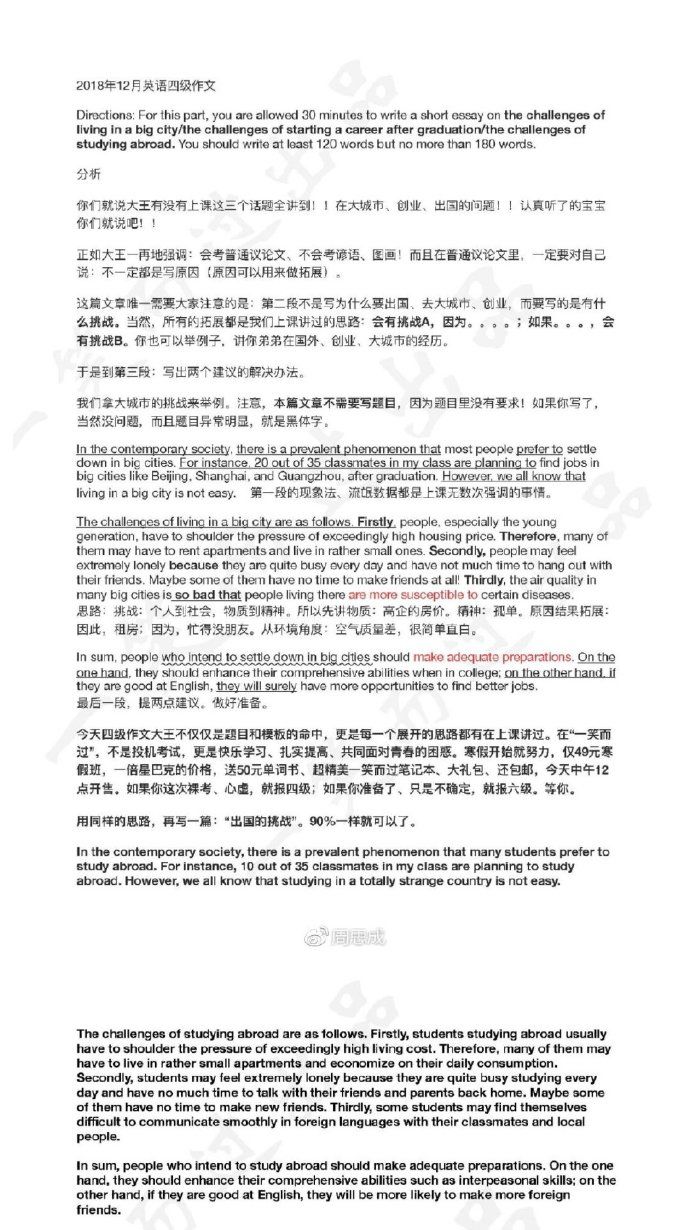GMAT考试RCOGWORD(一)
|
Passage 1 Caffeine, the stimulant in coffee, has been called “the most widely used psychoactive substance on Earth .” Synder, Daly and Bruns have recently proposed that caffeine affects behavior by countering the activity in (5) the human brain of a naturally occurring chemical called adenosine. Adenosine normally depresses neuron firing in many areas of the brain. It apparently does this by inhibiting the release of neurotransmitters, chemicals that carry nerve impulses from one neuron to the next. (10) Like many other agents that affect neuron firing, adenosine must first bind to specific receptors on neuronal membranes. There are at least two classes of these receptors, which have been designated A1 and A2. Snyder et al propose that caffeine, which is struc- (15) turally similar to adenosine, is able to bind to both types of receptors, which prevents adenosine from attaching there and allows the neurons to fire more readily than they otherwise would. For many years, caffeine’s effects have been attri- (20) buted to its inhibition of the production of phosphodi- esterase, an enzyme that breaks down the chemical called cyclic AMP.A number of neurotransmitters exert their effects by first increasing cyclic AMP concentra- tions in target neurons. Therefore, prolonged periods at (25) the elevated concentrations, as might be brought about by a phosphodiesterase inhibitor, could lead to a greater amount of neuron firing and, consequently, to behav- ioral stimulation. But Snyder et al point out that the caffeine concentrations needed to inhibit the production (30) of phosphodiesterase in the brain are much higher than those that produce stimulation. Moreover, other com- pounds that block phosphodiesterase’s activity are not stimulants. To buttress their case that caffeine acts instead by pre- (35) venting adenosine binding, Snyder et al compared the stimulatory effects of a series of caffeine derivatives with their ability to dislodge adenosine from its receptors in the brains of mice. “In general,” they reported, “the ability of the compounds to compete at the receptors (40) correlates with their ability to stimulate locomotion in the mouse; i.e., the higher their capacity to bind at the receptors, the higher their ability to stimulate locomo- tion.” Theophylline, a close structural relative of caffeine and the major stimulant in tea, was one of the most (45) effective compounds in both regards. There were some apparent exceptions to the general correlation observed between adenosine-receptor binding and stimulation. One of these was a compound called 3-isobuty1-1-methylxanthine(IBMX), which bound very (50) well but actually depressed mouse locomotion. Snyder et al suggest that this is not a major stumbling block to their hypothesis. The problem is that the compound has mixed effects in the brain, a not unusual occurrence with psychoactive drugs. Even caffeine, which is generally (55) known only for its stimulatory effects, displays this property, depressing mouse locomotion at very low concentrations and stimulating it at higher ones. 1. The primary purpose of the passage is to (A) discuss a plan for investigation of a phenomenon that is not yet fully understood (B) present two explanations of a phenomenon and reconcile the differences between them (C) summarize two theories and suggest a third theory that overcomes the problems encountered in the first two (D) describe an alternative hypothesis and provide evidence and arguments that support it(D) (E) challenge the validity of a theory by exposing the inconsistencies and contradictions in it 2. According so Snyder et al, caffeine differs from adenosine in that caffeine (A) stimulates behavior in the mouse and in humans, whereas adenosine stimulates behavior in humans only (B) has mixed effects in the brain, whereas adenosine has only a stimulatory effect (C) increases cyclic AMP concentrations in target neurons, whereas adenosine decreases such concentrations (D) permits release of neurotransmitters when it is bound to adenosine receptors, whereas adenosine inhibits such release(D) (E) inhibits both neuron firing and the production of phosphodiesterase when there is a sufficient concentration in the brain, whereas adenosine inhibits only neuron firing 3. In response to experimental results concerning IBMX, Snyder et al contended that it is not uncommon for psychoactive drugs to have (A) mixed effects in the brain (B) inhibitory effects on enzymes in the brain (C) close structural relationships with caffeine (D) depressive effects on mouse locomotion(A) (E) the ability to dislodge caffeine from receptors in the brain 4. According to Snyder et al, all of the following compounds can bind to specific receptors in the brain EXCEPT (A) IBMX (B) caffeine (C) adenosine (D) theophylline(E) (E) phosphodiesterase 5. Snyder et al suggest that caffeine’s ability to bind to A1 and A2 receptors can be at least partially attributed to which of the following? (A) The chemical relationship between caffeine and phosphodiesterase (B) The structural relationship between caffeine and adenosine (C) The structural similarity between caffeine and neurotransmitters (D) The ability of caffeine to stimulate behavior(B) (E) The natural occurrence of caffeine and adenosine in the brain 6. The author quotes Snyder et al in lines 38-43 most probably in order to (A) reveal some of the assumptions underlying their theory (B) summarize a major finding of their experiments (C) point out that their experiments were limited to the mouse (D) indicate that their experiments resulted only in general correlations(B) (E) refute the objections made by supporters of the older theory |








